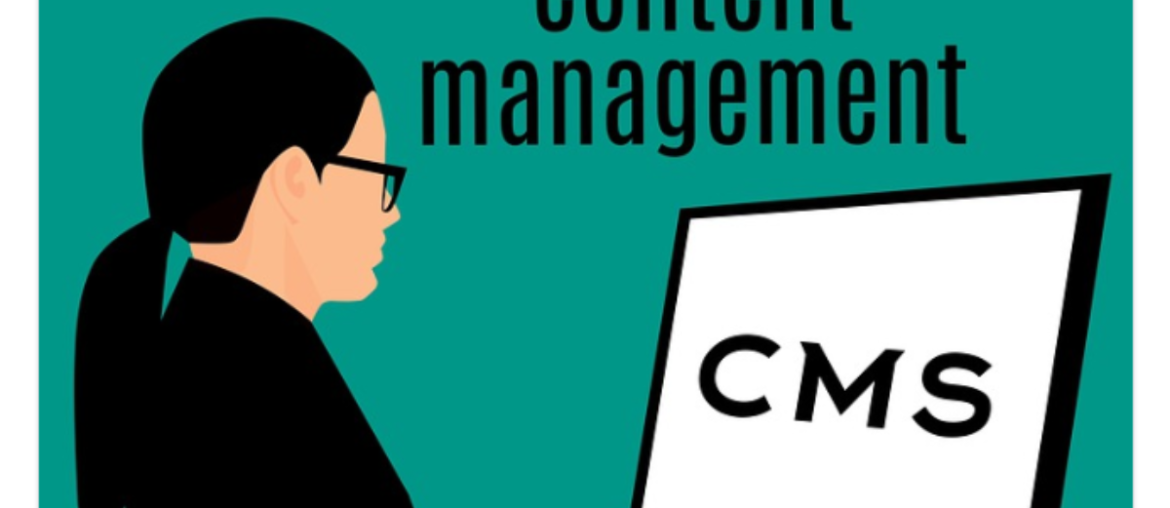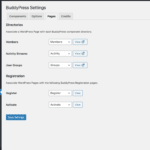In a headless CMS vs. traditional CMS which system best suits your specific needs? Let’s know about them in brief and learn about the best CMS according to your requirement. There are a number of benefits to the notion of content management. To adopt new features, a complete rebuild of the website would be needed, and many times this would coincide either with a new version of the CMS platform or choosing a new CMS platform.
WordPress has PHP application code that powers the functionality of your site and connects the database to the theme. It also helps to modify the database. In other words, it pulls content from the database and pushes it into the generic theme layout.
The CMS industry has added more and more features to make unique content. A new user can use one of these CMS according to your need which results in your content being productive. It should be user-friendly including a robust database along with an admin dashboard.
Headless CMSs allow you to change your mindset and think of content strategy first before design as compared to traditional CMS. Whereas, A traditional CMS has the advantage of being familiar, and part of familiarity is comfort with use.
You cannot have all features in one CMS, need to opt either traditional or headless. To select one of them you can set up a hierarchy with all your feature needs and requirements. Just see which one of them “checks off” the most requirements on your list. Reading out the comparison between headless CMS vs. traditional CMS helps you to determine which one’s a better fit for you.
A. What is a headless CMS?

A Headless CMS is the best and economical approach to change your mindset and think of content strategy first before design. When you create content in a headless CMS, you create raw content not the layout or design of the content. Headless CMS gives you the flexibility and freedom to build your own front-end — Angular, Rails, Node.js-based.
A headless CMS stores content with a content editing dashboard and also provides an API to pull that content into your own applications front-end. You can easily integrate it with content management tools via an API. It mainly focuses on the first two and breaks apart the tight connection between the backend and front-end. You can integrate the functionalities that you need into your website with the help of Headless approach.
A headless CMS takes the advantage of the API to deliver raw content anywhere such as website, mobile app, and wearable — essentially anything connected to the internet. This is a very different approach than something like WordPress which keeps you contained in its system where everything is in one place.
How Headless CMS Works?
As the term indicates headless means that the system has no head i.e. frontend. In simple words, it offers the backend for content storage and management and an API for connecting the backend to any application frontend and transmitting content to any device. In this most of the endpoints are hosted in the cloud and highly flexible.
Use a Headless Approach if you already have your existing website built on a specific modern tech stack like Node.js, Ruby on Rails and you need to integrate it with a content management system, quick and easy. While being more resource-demanding than a headless CMS, it provides you with more built-in functionality.
It offers the delivery of your raw content from a single backend to multiple devices — desktop, mobile, IoT. At the same time, deploying a new device or modifying one channel does not affect the whole system. Headless CMS helps you deliver a better user experience. You get to choose whatever modern JS framework you want for your website. It is more cost-efficient, faster and secure. The headless approach allows brands to handle the endless number of interaction channels.
Headless CMS is useful if…
- You need to communicate with your users via multiple touch points.
- You have a large team of developers or you can afford to attract third-party specialists.
- You want to use a variety of technologies for creating your product.
- You want to create a unique user experience.
- You need a scalable solution because you are planning to expand your project in perspective.
Advantages and Disadvantages of a Headless CMS
Now, let’s take a look at some advantages in favor of choosing an alternative system without a presentation layer.
Advantage of Headless CMS:-
- Always up to date —It is fully managed and upgraded for you. This helps you and your team as it has all upgraded features.
- Flexibility —you are free to choose technologies for creating unique user experiences.
- More Scalable —you can customize and upgrade your digital assets without affecting the performance of the whole system.
- Easy to redesign — making some changes doesn’t mean redesigning the whole system
- Time-efficient — you can quickly deliver the same content to numerous touch points and make changes without additional expenses.
A headless CMS provides complete control over how and where your content appears. Developers can use whatever language and framework they want because it doesn’t depend on existing technology. Additionally, headless CMS is more “future-proof” as it integrates easily with new technologies and applications.
Disadvantage of Headless CMS
- High costs — the implementation and maintenance are rather expensive because of the fragmented technological stack.
- No content previews — no opportunity to preview content before it goes live.
- Dependency on developers — marketers have no visual tools for creating page layout by themselves, they have to work with developers.
B. What is Traditional CMS?
Traditional CMSs have been around for a long time. Everything is packaged together and the technical architecture tightly links the frontend to the backend. WordPress comes with a predefined generic theme having front-end files that control how your site looks.
Content is created, managed, and stored along with all of your digital assets on the backend of sites. To manage the content traditional CMS offer a dashboard that navigates users through how to add content or change the appearance of their site.
A traditional CMS has the advantage of being familiar which is very comfortable to use. It is good if you want to use built-in themes and templates as a starting point and customize from there.
You make some sacrifices by choosing a traditional CMS. Content types and delivery channels are limited depending on which type of traditional CMS you choose. Traditional CMS comes with a repository for your content, as well as a UI for editing it and a theme for displaying it to your website visitors. Traditional CMS options offer easy-to-use WYSIWYG editors and tutorials explaining how to use the system to implement common site functionality like blogs, eCommerce sites, etc.
How Traditional CMS Works?
The architecture of a traditional content management system is based on the tight connection between the backend and the frontend. Thus, the content is pushed from the database into a predefined layout, and if you want to make some changes in this scheme, you’ll have to do it manually and revamp the entire structure of your system.
In traditional CMS the backend includes a database with code and plugins that make it possible to store, manage and edit content. It has built-in theme templates and CSS that are responsible for displaying content on your website. You don’t need to cover multiple channels for delivering content.
WordPress is currently the most popular traditional CMS, holding 62% of market share and powering 35% of all the websites on the internet. It includes a database MySQL, PHP code and HTML templates, CSS, JavaScript files that compile a predefined theme.
In a traditional CMS the website visitor has to wait until the server has finished all the transactions.
Traditional CMS is useful if…
- Your website is simple and out-of-the-box templates will be sufficient
- You don’t have a large team of developers
- Budget is limited
- You want to have full control over the content, from creation to displaying
Advantages and Disadvantages of a Traditional CMS
A traditional CMS has its advantages and disadvantages like other digital systems. Here are some advantages that make a traditional system so popular.
Advantage of Traditional CMS:
- Simple setup and usage — all components for content creation and publishing are coupled in one place, so the system is easy to set up, and a friendly user interface enables seamless usage
- Clear pricing — you use one system with one account and pay for it without additional charges.
- Time Efficient — Using a CMS with an off-the-shelf theme can reduce the time to market.
- No dependency on developers — the system is written in one language and can be controlled by one technical specialist, while marketers use templates for delivering content and don’t need developer assistance
- Low barriers — to entry for developers and content creators
Disadvantages of Traditional CMS:
- Complicated redesign — making changes means modifying the whole system, which is time-consuming and expensive
- Limited creativity — since there is the dependency on the layout templates, you can create only standard presentation and user experience.
- Website-only content — you won’t be able to seamlessly use the same content for mobile or IoT devices without APIs
Your decision should depend on what you need, what your developers feel most comfortable with, and the amount of versatility and control you want for your CMS. It would be right to say that a headless CMS is right for everyone. Headless CMS helps to keep your developers focused on your tech stack instead of having them take the time and energy in your existing technology. If you have an existing website or application built using a modern tech stack like Node.js, Ruby on Rails, etc. and you want to easily add blogging and CMS capability Headless CMS is the best option for you.
Interesting Reads:
WordPress Themes For Family Blogs





